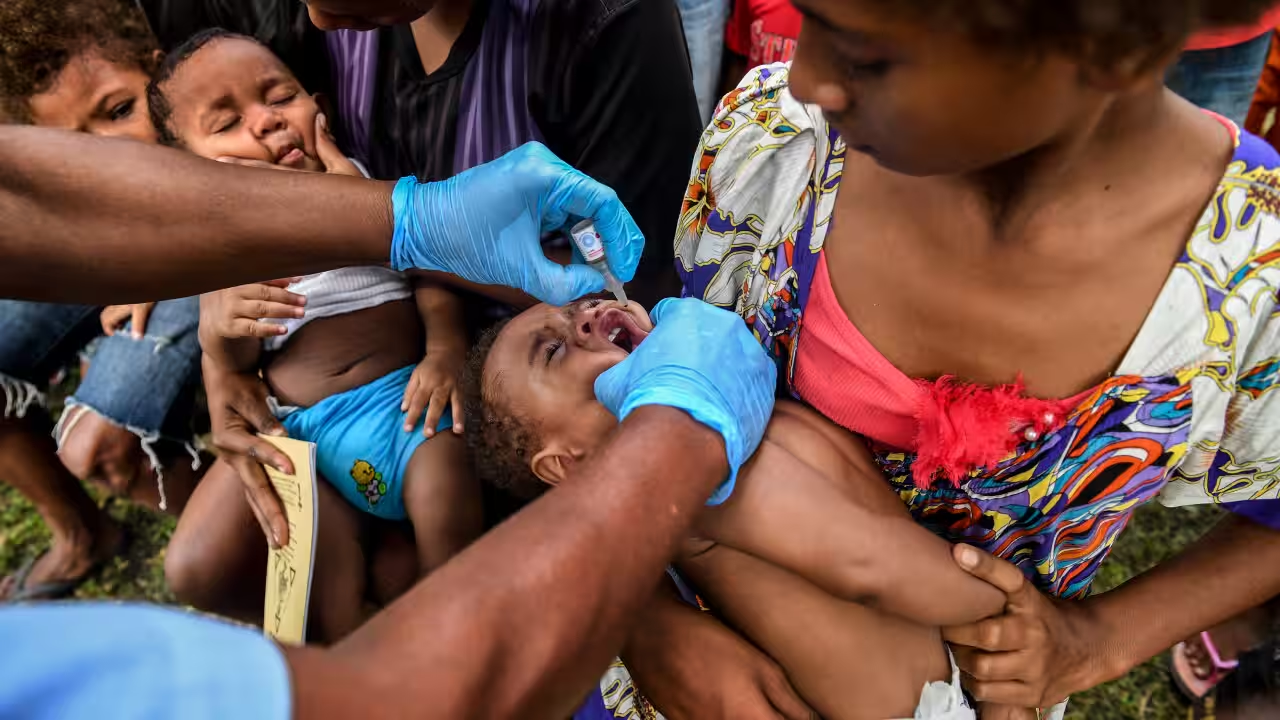
DiYES International School – Papua New Guinea has taken decisive steps in strengthening its national polio defense. Beginning on June 18, a three-day training program has been launched for district-level health workers across the country. This initiative, backed by the Ministry of Health and international partners, aims to boost awareness and preparedness against circulating vaccine-derived poliovirus type 2 (cVDPV2), a mutated form of the virus that has recently re-emerged in certain vulnerable regions.
Though Papua New Guinea had been declared polio-free for years, the country has faced renewed threats since 2018. The virus, in its mutated form, has resurfaced in under-immunized populations. Gaps in routine immunization, disruptions during the COVID-19 pandemic, and logistical challenges in rural areas have contributed to a renewed risk. Therefore, frontline health workers are being equipped with updated protocols to identify, prevent, and respond to any signs of outbreak. Training modules also include cold-chain management, rapid case reporting, and community engagement strategies.
The training program covers three intensive days and directly engages hundreds of health officers from districts with low immunization coverage. Public health specialists lead workshops that focus on early detection and effective management of acute flaccid paralysis (AFP), a critical sign of poliovirus transmission. Organizers emphasize real-time surveillance and facilitate active data sharing between provinces. The World Health Organization and the Global Polio Eradication Initiative supported the creation of training materials. Facilitators use interactive sessions to walk health officers through each stage of outbreak response drills.
On the first day, coordinators handed out printed field manuals. Trainers will continue sessions in three additional high-risk provinces throughout July. Officials confirmed the inclusion of simulation exercises to strengthen team coordination. Community health workers maintain routine vaccination schedules and speak directly with families who express hesitation. In hard-to-reach regions, mobile health units bring services closer to isolated populations and expand overall outreach.
“Read about: Global Pediatric Health Summit 2025: Breakthroughs and Challenges in Children’s Care”
The urgency surrounding this campaign stems from the recent rise in vaccine-derived poliovirus cases in other countries. Though rare, cVDPV2 outbreaks can spread rapidly in communities where immunization coverage falls below herd immunity thresholds. Once introduced into such areas, the virus may mutate and circulate silently. Therefore, vaccination drives must be comprehensive and sustained.
Papua New Guinea’s health officials have learned from past outbreaks. In 2018, a national outbreak response was launched within weeks of confirmation. Over 3 million children were vaccinated in nationwide drives that followed. However, continued vigilance is necessary. New policies now require real-time digital tracking of vaccine deliveries and field team activities. Staff were briefed on updated safety procedures for inactivated polio vaccine (IPV) administration. Stakeholders reiterated that local leaders and religious figures must be engaged to dispel myths and encourage trust in the health system.
“Read more: Iowa Bible Study Camp Raided Amid Human Trafficking Investigation”
Papua New Guinea joins forces with regional allies to strengthen its polio response. The government of Australia, Indonesia, and leaders across the Pacific Islands have intensified cooperation. Officials signed cross-border surveillance protocols in May 2025. Regional labs now process suspected case samples more quickly through an integrated diagnostics network. WHO’s regional hub has placed mobile response units on standby for immediate deployment. UNICEF manages vaccine procurement and logistics through the COVAX platform. Local NGOs organize volunteers to support community mapping and spread accurate information.
The Ministry of Health and global partners issued a joint statement, highlighting the urgency of the eradication effort. “If we act now, we can break transmission chains before they expand,” the statement declared. Health officials presented detailed reports to cabinet-level committees earlier this week. Leaders recognized field teams for their strong performance during the measles and COVID-19 campaigns. Independent monitors will conduct evaluations of the current training sessions to maintain consistency and highlight areas needing improvement.
This year’s response plan introduces major updates through digital monitoring systems. Health officers now log immunization activities using mobile apps that sync directly with centralized dashboards. Program managers use satellite mapping to locate immunization gaps more efficiently. When the system detects a drop in coverage, it sends real-time notifications to local officials. Field teams monitor vaccine storage conditions with GPS-enabled cold boxes during transport. These digital tools help health officials respond quickly when disruptions occur in the field.
Public health authorities have also shifted communication efforts toward multilingual outreach. Designers create posters and produce radio messages in Tok Pisin, Motu, and several other local languages. Outreach teams distribute these materials across rural villages. Health communicators adapt key messages to suit different groups, including youth organizations and village elders. Officials prioritize community-led behavior change instead of relying solely on top-down directives. During immunization week, school programs now include storytelling sessions, art competitions, and quiz games to promote awareness and learning among children.
Ultimately, the success of this polio response training will depend on local ownership and continuous investment. Health officers will carry knowledge back to their districts, where they must adapt protocols to their unique settings. Immunization gaps will be closed not just with vaccines, but through relationships—between health workers and families, between districts and national leadership.
Infrastructure will continue to be improved, with new health posts planned in underserved areas. The Ministry of Health has requested budget allocations for 2026 to cover permanent staffing, motorbike ambulances, and fuel subsidies for outreach programs. Global health actors have called for consistent donor support to maintain momentum. Surveillance efforts will also expand into environmental testing of water sources in densely populated areas.